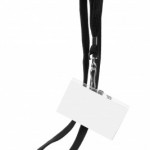Six ID Badge Design Tips
Superior ID badge design combines three elements: content, security and layout. An ID card with an attractive layout may lack appropriate security features, making it easier to duplicate. Or, an ID badge that has strong security features may lack a clear photo, making it more difficult to authenticate. Here are six ID card design tips to help you find the perfect balance of features to keep your ID badge program safe and sound.
1. Determine your Security Needs – There are number of security features that can be manufactured into an ID badge. These include barcodes, magnetic strips, holograms, UV light ink, photos and more. The challenge is to balance security needs with manufacturing costs and layout restrictions.
2. Outline Card Content – In addition to security features, there are a variety of elements that will need to be included on your ID badge. These may include a company logo, badge holder’s name and title, employee ID and more. These features, combined with your security elements and lanyard attachment point, will be factors in determining card layout, and whether your card will be one-sided or two.
3. Photo Quality – If photo verification is an important part of your security program, it’s important to focus on photo quality. A larger photo will typically be better quality and easier to decipher. Decide on both photo size and color, as well as background. A white background adds contrast, making photos “pop,” while colored backgrounds can be used to signify various security access levels or classifications. Also consider card finish. A gloss finish can sometimes make photos less legible to security personnel.
4. Orientation – It’s important to decide which way your ID card will be displayed. A horizontal orientation works better with wide images, such as text-based logos, and a vertical orientation can sometimes be a better option for cards with multiple security elements. It’s also a matter of preference.
5. Design Elements – An ID badge is more than functional, it also represents your company’s brand, and will be visible both inside and outside of your facility. It’s important not only to include a clear company logo, but to also pick fonts that are both attractive and easy to read, such as a san-serif font. Don’t be afraid to include color in your design, as long as it doesn’t make your badge difficult to authenticate. Quality blank cards, free of imperfections, will deliver the best quality graphical reproduction.
6. Card Thickness – While not a design consideration, card thickness is an important factor, especially for ID cards incorporating magnetic strips. These cards will be subjected to increased torsional stress by card readers, requiring additional thickness. A standard 30 mil card stock is recommended.
You may choose to print your own ID badge. However, a professional ID badge printer can provide you with a wider array of security features, allowing you to print personalized card elements in-house. Some plastic card printers also provide fulfillment services, allowing them to manufacture your cards, and print photos and other personalized information as needed.





